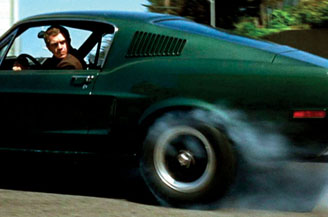|
|
Viking Night: BullittBy Bruce HallJanuary 18, 2011
But Frank Bullitt is not quite a renegade. He’s a dedicated detective with a positive image, but when it becomes obvious that he’s been played for a fool and his competence has been called into question he isn’t above pushing boundaries and standing up to his superiors to get to the truth. And he's got no problem sacrificing personal comforts for work when necessary. In fact, a key element of the book was the grueling and often thankless nature of police work and the toll it often takes on the personal lives of those charged with protecting public order. The film toys with idea this a bit, largely unsuccessfully. Jacqueline Bisset is cast as Bullitt’s love interest, and the film pauses several times to acknowledge the strain the investigation is putting on their relationship. The subplot is not fleshed out well – Frank is with her at the time his witness is attacked, inadvertently making him seem shortsighted and foolish; later on her presence at a crime scene only serves to rob the film of valuable momentum. A minor quibble, but needless to say the invasion of police work into the lives of those who serve is better examined by later films. With that out of the way, how long did you think I was going to go on without mentioning the most famous part of the film? In the unlikely event you don’t know what I’m talking about; Bullitt is principally remembered for the ten minute car chase scene two thirds of the way through the story. Often referred to as the “greatest” chase in film history, I’ve always felt that the overall significance of it gets lost, overshadowed by the visceral thrill of seeing two high powered muscle cars launch themselves through the streets of San Francisco at ludicrous speeds. For my money you can’t beat the car chase in 1998’s Ronin for sheer over the top eye candy. But as far as context, execution and overall relevance, Bullitt sets the bar pretty high.
|

|
|
|

|
Friday, November 1, 2024
© 2024 Box Office Prophets, a division of One Of Us, Inc.


